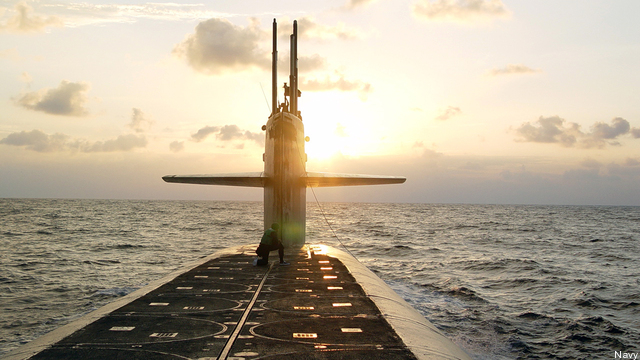Navy Seeks Sub Replacement Savings: From NASA Rocket Boosters To Reused Access Doors
http://breakingdefense.com/2014/04/navy-seeks-sub-replacement-savings-from-nasa-rocket-boosters-to-reused-access-doors/

Navy Seeks Sub Replacement Savings: From NASA Rocket Boosters To Reused Access Doors
By Sydney J. Freedberg Jr. on April 07, 2014 at 4:18 PM
NATIONAL HARBOR: This is rocket science. As the US Navy tries to keep its crucial 1990-vintage Trident D5 nuclear-capable missile viable for decades to come, it’s working with everyone from the Royal Navy to the US Air Force to NASA to keep costs down and technology up to date. Meanwhile, the design team for the new nuclear missile submarine that will carry those Tridents after 2031 is already down in such low-tech weeds as salvaging launch tube doors from the existing Ohio-class nuclear subs as they retire from service.
“The issue with NASA (is) it takes 10 Trident missiles to make up one Space Shuttle booster,” in terms of the rockets’ relative size, explained Vice Adm. Terry Benedict, Navy director of Strategic Systems Programs, when I asked him about it after his remarks this morning at the massive Sea-Air-Space conference. “So when NASA dropped the Space Shuttle program (in 2011), the industrial base took a significant impact,” the admiral said. There’s no way the Navy’s much smaller demand for nuclear missile boosters can make up for the loss of Space Shuttle booster business.
Because the industry builds fewer missiles, each booster the Navy buys carries more overhead costs and a heftier price tag (though Benedict didn’t say how much). For now, said the admiral, “through a lot of concerted effort with industry we’ve been able to maintain costs at what I’ll call an acceptable level.”
In the longer run, however, the viability of the rocket booster industrial base and the affordability of the Navy’s nuclear missiles depends in large part on the decision NASA must make circa 2016 about how (or whether) to replace the shuttle. Benedict and his staff are “working closely” with NASA, but ultimately it’s not the Navy’s decision to make.
--
Replacing older subs with Virginia-class subs will be expensive; at least $7 billion dollars a copy..
A new class of sub will most likely cost even more than a Virginia-class sub.
